French Renaissance
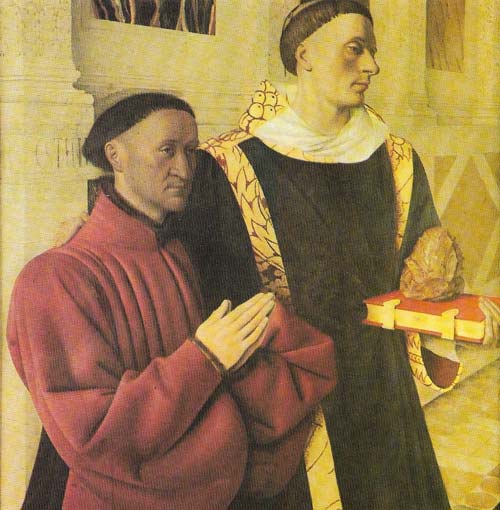
Figure 1. Jean Fouquet’s “Etienne Chevalier and St Stephen” (c. 1452) is the left half of a diptych that stood over the tomb of Chevalier at Melun, the right half of the work shows a Madonna with angels; the donor’s patron Saint was thus seen to be recommending him to the Virgin’s mercy. Chevalier was one of the most important of Charles VII’s courtiers and for him Fouquet made a book of hours. This work also reveals the virtuosity of his perspective and classical pilastered backgrounds – clearly the fruits of his recent Italian journey. But few contemporary Italians were so advanced, and Fouquet’s realism derives more strongly from his roots in Flemish art.
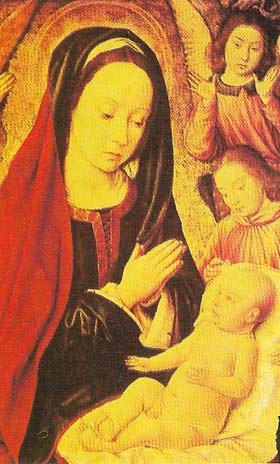
Figure 2. Master of Moulins “Madonna” (c. 1490) was influenced by the Fleming Hugo van der Goes as much as by Fouquet. The artist was probably the Dutchman Jean Hey, court painter to the Bourbons in Moulins, hence his title.
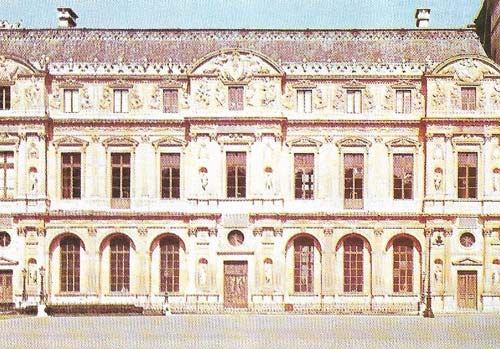
Figure 3. Pierre Lescot’s Cour Carrie of the Louvre was begun in 1546. Francis I’s rebuilding of the old Louvre (from 1527) was a sign of the return of central power to Paris after a century’s absence. Lescot collaborated here and elsewhere with the sculptor Goujon, for whose reliefs there are Italian precedents.
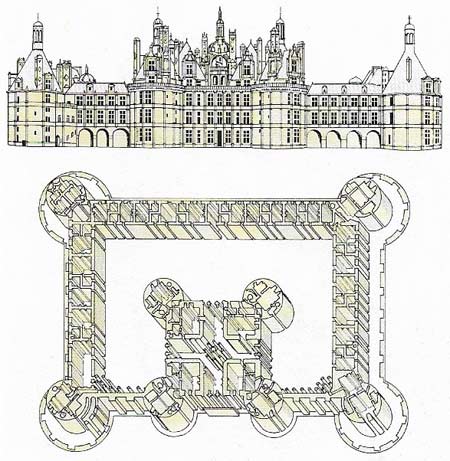
Figure 4. Chateau de Chambord was begun in 1519 and its architect was probably Dominica da Cortona, although the only real traces of Italian planning are in the cruciform keep. Otherwise the overall design is characteristic of French medieval chateaux. It was built for a Francis I.
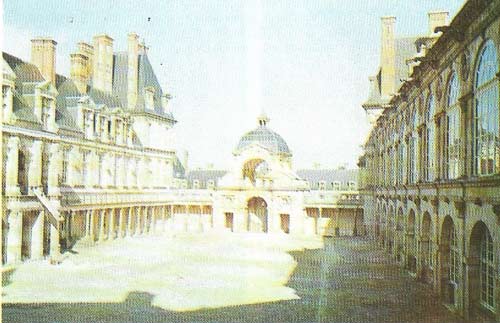
Figure 5. The Cour Ovale of the Chateau de Fontainebleau (begun c. 1530) was added by Gilles Le Breton to the medieval hunting lodge of Francis I. The upper triple-arched opening on the left was originally approached by an exterior staircase. The domed gateway was added c. 1640.
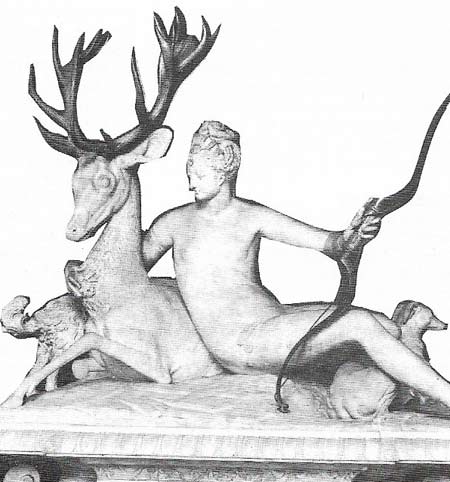
Figure 6. “Diana”, attributed to Pilot (c. 1550), is from a fountain of the Chateau of Anet.
The origins of French painting and sculpture of the 15th century have much in common with those of Burgundian and Netherlandish art; indeed, artists such as the Dutchmen Jean Malouel (died 1415) and the Limbourgs worked for both French and Burgundian courts. French painting, however, was rooted in a lively tradition of miniature painting, especially in Paris, which was also one of the main centers of the International Gothic style.
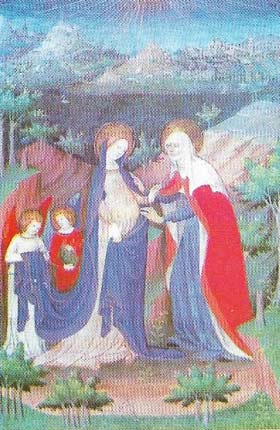 |
“The Visitation” from the Boucicaut Hours (c. 1405) is a narrative scene surrounded by a foliate border. The soft, convoluted drapery typifies international Gothic. But the landscape looks forward to Van Eyck’s naturalism. |
Naturalism and simplicity
Inspiration for a new beginning came from two directions, Italy and Flanders, and the most important artist concerned was Jean Fouquet (c. 1420–1480) (Figure 1), who was in fact in Rome c. 1446–1450. The combination of the new naturalism of the north with the simplification and lucidity of form and space of the south is without parallel in the mid-century. Fouquet, who appears to have been the principal artist of Charles VII (1403–1461) and Louis XI (1423–1483), worked as a panel painter and miniaturist in Tours and Bourges; and other artists connected with the court, such as the Master of Moulins (Jean Hey) (Figure 2), worked in this part of the Loire valley, then favoured by the royal household. There was also, however, a very active school in Provence from about 1440, the painters being sometimes more inclined to a Flemish style (Nicolas Froment (c. 1450–1490) for example) and sometimes to an Italian (Enguerrand Quarton).
French sculpture of the 15th century was mainly the product of regional schools pursuing the Gothic style into its last naturalistic stages, and the chief new stimulus was provided by Claus Sluter (fl. 1390–1406) in Dijon. However, Michel Colombe (c. 1430–c. 1512), who shared royal patronage and even commissions with Fouquet, was perhaps as outstanding a figure; almost all his works have been destroyed and those that survive, such as the transitional Gothic-Renaissance tomb of Francois of Brittany at Nantes (1499–1507, partly by Italian assistants), are amongst his last works. Architecture is generally most original in secular genres, châteaux and great town houses such as the Hôtel Jacques-Coeur at Bourges (1444–1451) or the Hôtel de Cluny in Paris (begun 1485); in such buildings there appear elements of planning that were to recur in the great châteaux of the next century, broad courtyards, external staircases, round towers. steep roofs and rudimentary galleries.
Culture from conflict
The reinvigoration of French art from about 1500 was mainly the result of the successes of Charles VIII and Louis XII in military raids into Italy in 1494 and 1499; culturally the French became subject to Italy, over-whelmed by the cultivated Renaissance they met in Florence, Naples and Milan. The beginnings of an Italianate court were made under these kings. The earliest well-documented (but imperfectly surviving) product is the Château de Gaillon (1501–1510), built and decorated, in part by Italians, for the Cardinal-Minister d'Amboise. But this Italianism became a program under Francis I (reigned 1515–1547), who visited and admired Italy and attracted to his court Italian poets, musicians and artists (among them Leonardo). Later it was secular building that dominated French art for a century, as the monarchy and its dependants provided themselves with settings in the new style, adapted, naturally to social and climatic conditions quite different from those in Italy and retaining features characteristically French, such as the gallery.
The earlier of Francis's own surviving buildings – a wing at Blois and the Chateau de Chambord (Figure 4) – are transitional and Italian detail is grafted on to local forms, sometimes with bizarre results, as among the half-flamboyant, half-Renaissance chimneys and dormers on the fantastic roof of Chambord. But all traces of Gothic have disappeared in the new buildings at Fontainebleau, begun for Francis in 1528 by Gilles Le Breton (Figure 5) and completed in the 1560s by Primaticcio. The result cannot, of course, be mistaken for an Italian building – its steep roofs and dormers preclude that – but by about 1530 a genuinely French Renaissance style is established, by far the most mature outside Italy. French architecture maintained this position under the leadership in mid-century of Philibert de l'Orme (c. 1510–1570) and Pierre Lescot (c. 1510–1578) (Figure 3); the chaste, cerebral style of the former seems from the standpoint of later centuries the foundation of the French classical tradition.
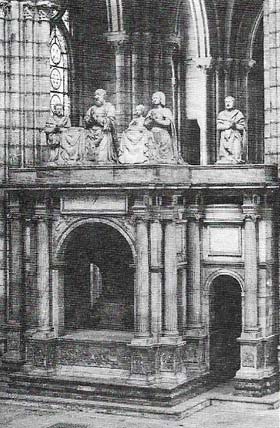 |
The tomb of Francis I in St Denis, Paris. Was begun in 1547 by Philibert de I’Orme. The form of a triumphal arch symbolizes the triumph of life over death, as in Italian tombs. The couple are presented within the tomb as dead and on top of it as alive, praying. The sculptor was Pierre Bontemps. |
The School of Fontainebleau
The royal court was so much the focus of activity in painting and sculpture that "the School of Fontainebleau" is a title that adequately covers the most striking developments in these arts. Again the presence of Italians summoned by Francis I was crucial: Rosso Fiorentino (1495–1540) and Francesco Primaticcio (1504–c. 1570) among the painters, Benvenuto Cellini (1500–1571) among the sculptors. As it happened there was far more native talent among the sculptors than among the painters; Jean Goujon (c. 1515–1562) and Germain Pilon (c. 1535–1590) (Figure 6) treat the human figure with grace and competence to match any Italian, save Michelangelo alone. The School of Fontainebleau, which was also strong in engraving and metalwork, was to become, from 1530, one of the most influential centres of Mannerism in the North.
